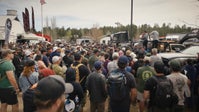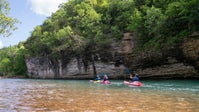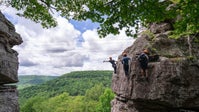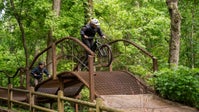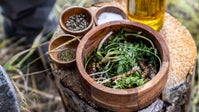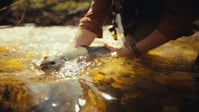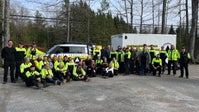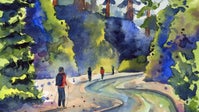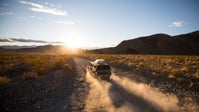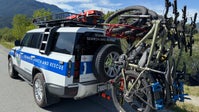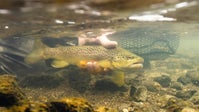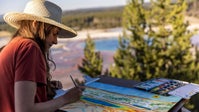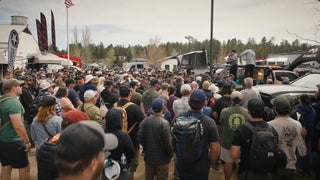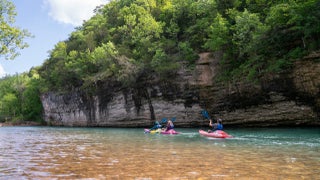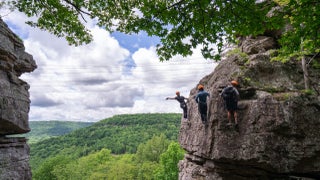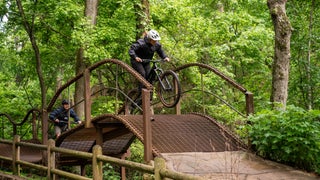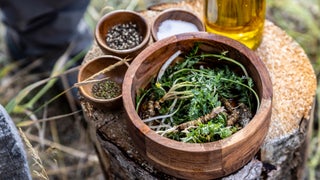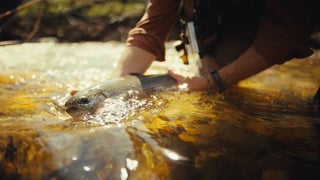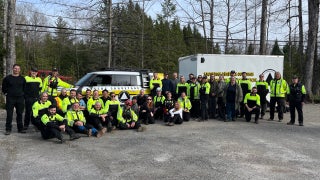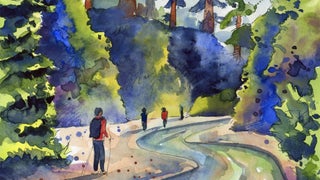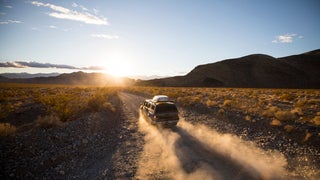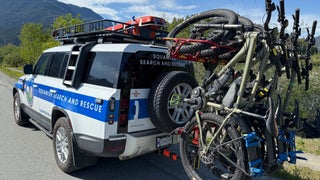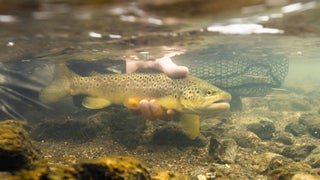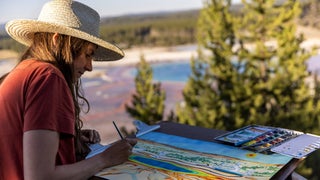SUBJECT: here in Yellowstone National Park. And Yellowstone is known for three things-- awesome landscapes like this one, geothermal features, and animals. And if you're anything like me, the animals are the coolest thing. And I just really love getting photos of them, and I really love sharing with my friends and family Instagram followers what I've seen while I'm in the park.
But I'm not a very good photographer, and I don't own a very nice camera. I just shoot stuff on my phone. So is there a way for me to come to the park and get more than just a black dot in the distance that I promise is a bear? We're going to show you how to do that.
[MUSIC PLAYING]
Here in the park, there's a minimum distance you're allowed to approach wildlife. That's 100 yards for bears and wolves, 25 yards for anything else. It's also not going to give you the best possible pictures, because at those distances, your presence will be disturbing the animals. It will probably be causing them to flee. They're not going to hold still for photos.
With powerful optics like this spotting scope, you can compress that distance. You can be 1,000 yards away and take an iPhone photo that looks like you're 50 yards away. And to do that, you just need a little plastic attachment called a phone scope that just perfectly centered your phone's camera on the eyepiece of the scope.
And you might look at this and go, well, spotting scopes like this one are very expensive, and they are. But here in the park, you can rent them for a very affordable fee. So what we have here is a device called a phone scope. And it's basically a phone case that perfectly centers your camera lens-- these are built for each individual model of phone-- perfectly centers your camera lens on the eyepiece of a spotting scope, or binoculars, or whatever you want to use.
And so this is sold for each individual phone, and this attachment is sold for each individual diameter of eye piece. So you just need to look up your eyepiece, find the diameter, order do the right little part. This is all super affordable.
This clips to this. This goes on this. And voila. So not only am I getting up to 27 times closer to the animal that I'm shooting, this thing also gathers light in such a powerful fashion that I'm also shooting later into the evening than I could with my phone alone.
This is the exact setup that I shot grizzly bears with last night. You know, we were probably 1,000 yards away from the grizzly bears. Totally safe. The grizzly bears had no idea we were there they were. They were going about their bear business. Not influenced at all by us. We didn't disturb them, we didn't habituate them. We didn't put our lives at risk. You couldn't see the bears with the naked eye at all. And we got sort of serviceable video, serviceable photos demonstrating that we saw these animals here in the park. I think that's a really cool thing.
Every time that human approaches an animal-- every time a human makes an animal a little more used to that human presence-- the animal gets more and more habituated. And it's a process that happens over time. And as the animals get more used to humans and more habituated to our environments and our campgrounds and our vehicles and our trash, their behavior starts to put humans at risk. And when that happens, when the animals spend too much time around us they come too close and feel too secure, those animals have to be put down.
So every little interaction you have here in Yellowstone or anywhere else where you approach an animal too closely, you're contributing to a threat to the animal's life. None of us want that. We all want to come here and see the beautiful animals. We all want this place to be around forever.
So I'm staying away from the animals I'm not influencing their behavior. I'm getting shots of them behaving as they would normally in nature without my presence, and I'm getting those later at night, earlier in the morning, and just taking vastly superior photos than I would otherwise.
I only shoot on on my phone. I don't really know what I'm doing. And I'm taking images that look almost as good as what a professional photographer would achieve here in the park.
Any magnification you can add is going to allow you to stay that much further from the animals, make your photos that much better. You can get better photos and better optics, but you're going to be able do everything we show you here with a cheap set of binoculars just fine.






